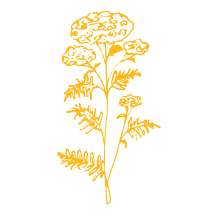
“Here on the edge of the river, the motifs are very plentiful, the same subject seen from a different angle gives a subject for study of the highest interest and so varied that I think I could be occupied for months without changing my place, simply bending a little more to the right or left.”
—Paul Cézanne
“A drawing of a tree shows, not a tree, but a tree being-looked-at.”
—John Berger
Ed Nadeau likes to walk in the woods near his Orono, Maine, home.
“Not every day, but almost every day, I go on long walks,” he says. “Five miles most days. I’m always seeing so many things I could paint.”
A painting inspired by Ed’s habitual walks, The Recumbent Birch falls easily within a modernist tradition of Western painting, which includes Gustave Courbet, Paul Cézanne, and Maine’s own Marsden Hartley. As with these influences, more is at play in Ed’s work than meets the eye.
Critic Bill Davenport wrote that Courbet “had a knack for making the random textures of messy paint convey the very different, but equally alive textures of the real world,” and the same can be said of Ed and his art. The Recumbent Birch is more than a picture of a recumbent birch.
When Ed was 15, his father died; themes of death and rising have infiltrated his work his entire career, including in The Recumbent Birch. A pine cone nested like an egg among needles directly above the fallen birch is no accident (from decay, new life will emerge).
“Ideas of memory and rebirth exist in my paintings as a whole,” notes Ed. “It has taken me these nearly 50 years since my father’s death to finally feel a truly symbiotic relationship with the land of his and my birthplace—to make what I think is my most powerful work.”
(The Recumbent Birch is more than a recumbent birch.)
This painting is not a direct copy from nature. Rather, Ed combines observation (he referred to multiple photographs in making it), memory, and painterly intuition to realize his work. As he notes, “My process is similar to that of a fiction writer in that my paintings are not always authentic depictions of actual people or places, but interpretations of ideas or events that develop over a period of time.”
Freed from fidelity to an actual scene, Ed indulges in the potency of color and texture, line and movement, mass and energy. His work is a feast of orchestration: colors pepper the surface in syncopated rhythm; diagonal lines short and long zing; sharply angled points stand against rounded shapes—his work is as much abstract song as it is a vision of nature.
Ed loves to paint, and his passion for his craft delivers two layers of pleasure—the whole of the scene itself, and the individual delights of his brushstrokes. Our eye is first mesmerized by the rhythmic pattern of yellows, greens, and blues, and then by the loveliness of the pine branches these colors depict; the dance of white, gray, and black brushstrokes are in themselves a thrill to behold, as is their perfect capture of the peeling birch bark with a fuzz of moss just beginning to take hold. Time and time again, Ed’s painting gives us something to notice and marvel at.
Mainers know the pleasures of a walk in the woods; for many of us, easy access to forest trails is a reason to live here. With The Recumbent Birch, Ed gives us not only a facsimile of what we might discover on a forest walk, but a sharing from his own daily roaming, every touch of brush to canvas a moment of wondrous exclamation: “Look at this!”
The pine needle floor. The moss-covered branch. The Recumbent Birch.
Writer and philosopher John Berger opens his essay Drawn to That Moment by noting that when his father died, he made “several drawings of him in his coffin.” Berger’s father’s death was a point of departure—in drawing his father, Berger believed he was carrying out an act that “refuses the process of disappearance.” Art-making for Berger became a transformative undertaking with spiritual overtones.
And so too with Ed.
In a world where fathers die, The Recumbent Birch is as much an ode to life’s perpetuity and return as it is a rendering of a moment in Maine’s fecund woods.
Ed Nadeau teaches art at the University of Maine. More of his work can be seen at his website.




